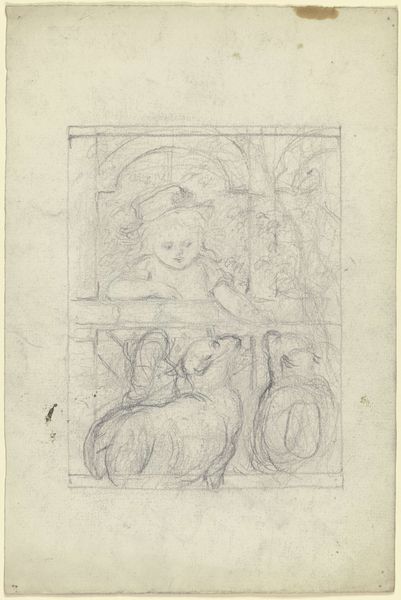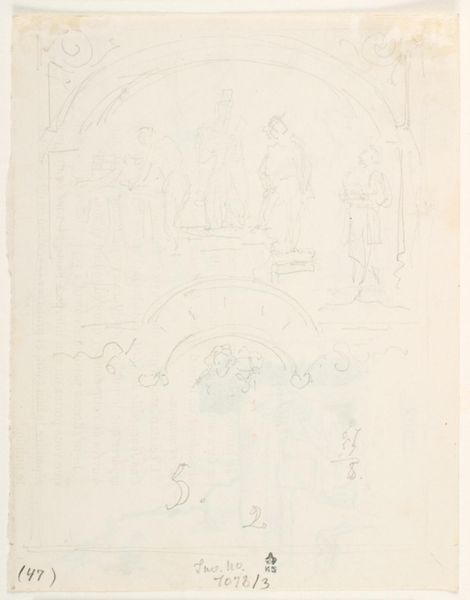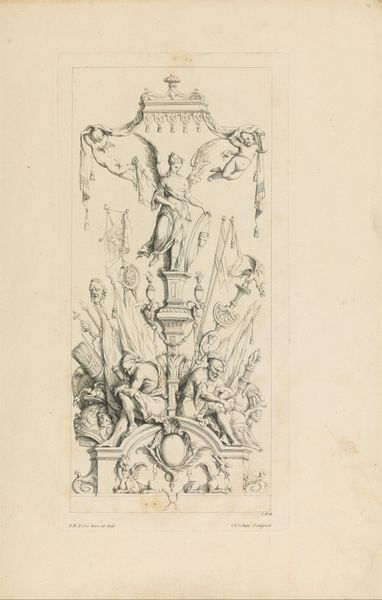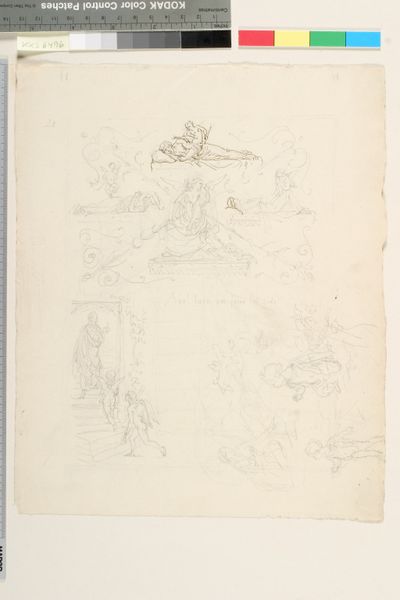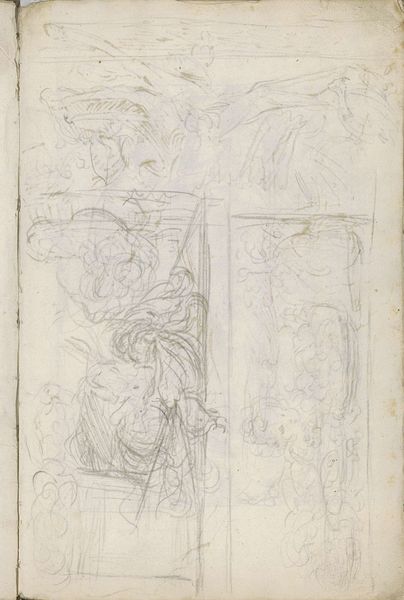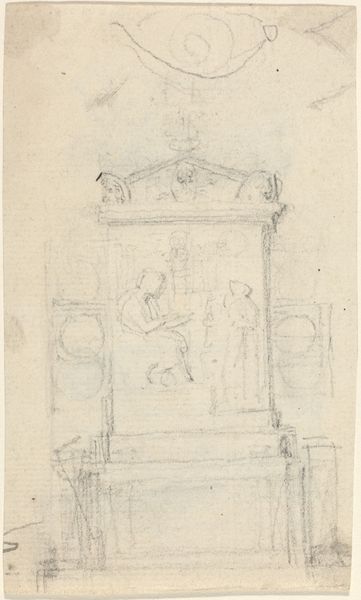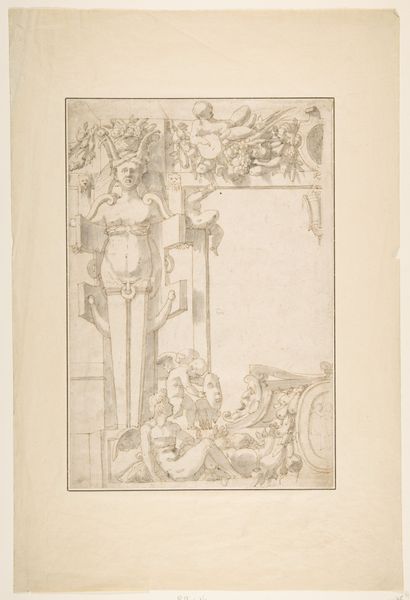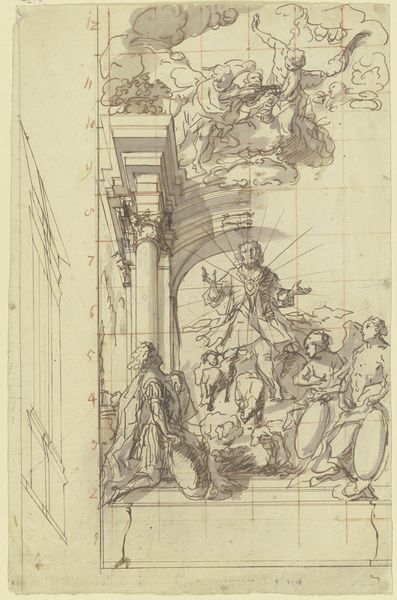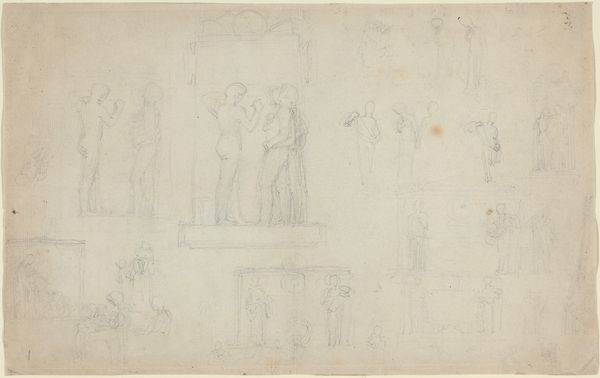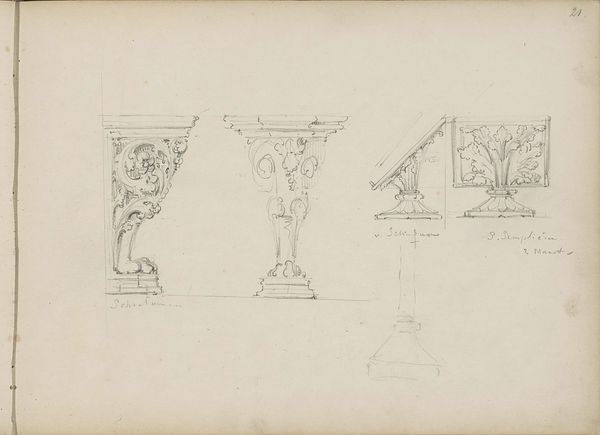
Detail eines Chorstuhles, zwei Kaiser neben dem Modell einer Kirche, zu ihren Füßen ein Löwe und ein Hund
0:00
0:00
drawing, pencil
#
portrait
#
drawing
#
light pencil work
#
16_19th-century
#
medieval
#
figuration
#
pencil
#
line
#
history-painting
Copyright: Public Domain
Editor: Here we have a drawing entitled "Detail eines Chorstuhles, zwei Kaiser neben dem Modell einer Kirche, zu ihren Füßen ein Löwe und ein Hund" by Karl Ballenberger, and it seems to be a pencil drawing of a portion of a choir stall. I'm immediately struck by the light pencil work; it’s almost ethereal. What jumps out at you? Curator: What I find fascinating is how this drawing documents a specific material culture and its methods of production. Look closely at the details—the almost photorealistic depiction of carved wood. How does Ballenberger’s pencil act as a form of reproduction? Editor: That's interesting. So, you're saying the drawing isn't just an image, but also a record of the craftsmanship and labor that went into making the choir stall itself? Curator: Precisely. We must consider the drawing itself as a product of its own time, reflecting both the enduring allure of medieval artistry and the burgeoning interest in documenting and classifying material objects during the 19th century. What type of patronage supported the original construction and why did the artist deem it worth re-producing? Editor: I hadn’t thought of that aspect of documentation. So, beyond just aesthetic appreciation, the drawing also highlights the value placed on skilled labor in both the creation of the original choir stall and Ballenberger's meticulous reproduction of it. Curator: Exactly! The drawing allows us to reflect on the shifting roles of artistic production – the initial act of medieval carving and Ballenberger's labor in documenting that work with pencil. Both capture value, in their time, within shifting networks of material and social relations. What does this tension suggest to you? Editor: That the act of creation and documentation are equally tied to the context they arise from. Curator: Precisely. Ballenberger gives us insight into the materials, skill, and labor of previous generations. Editor: This has completely changed how I see this drawing. I was initially focused on its aesthetic qualities, but now I appreciate it as a historical document, rooted in its own material context. Thanks!
Comments
No comments
Be the first to comment and join the conversation on the ultimate creative platform.
